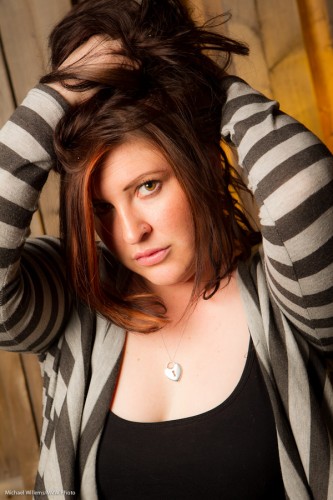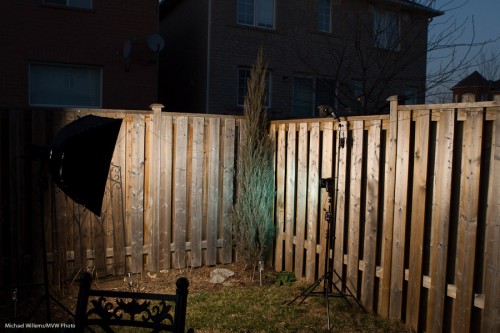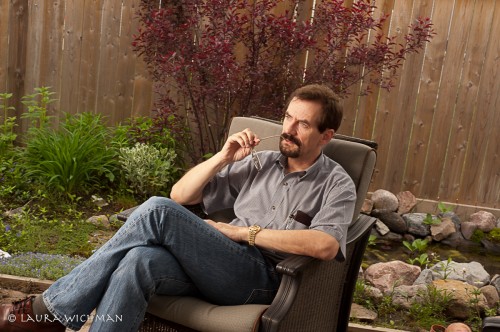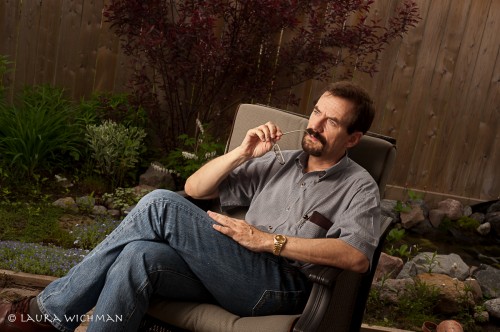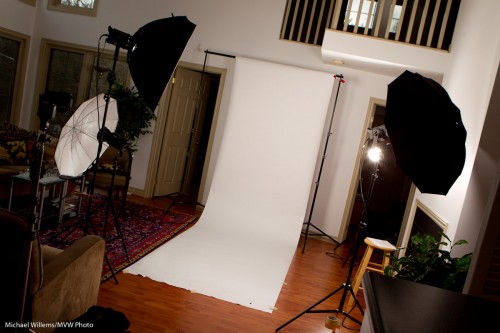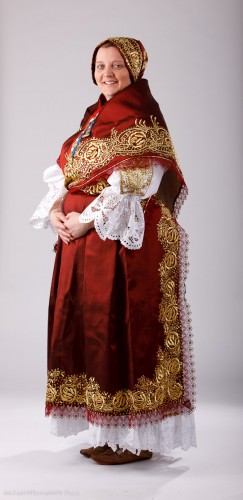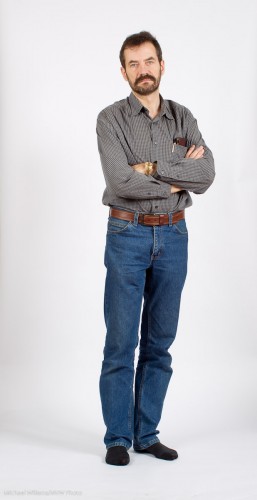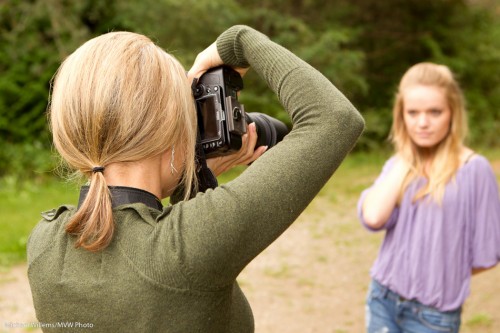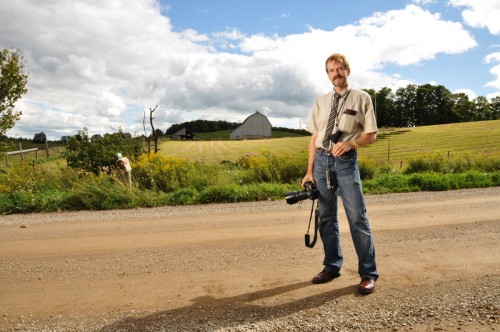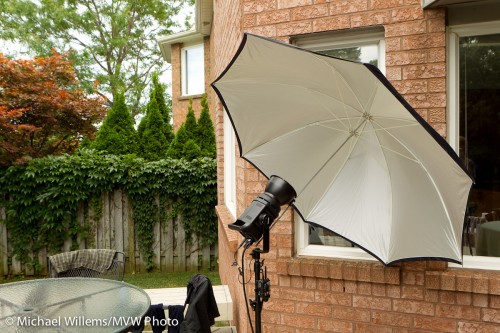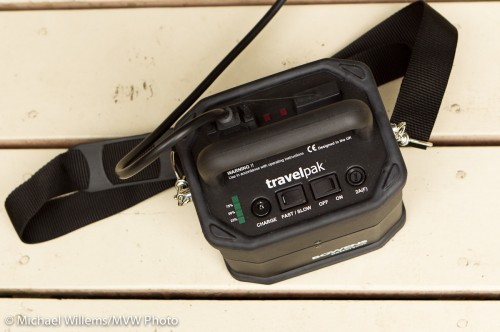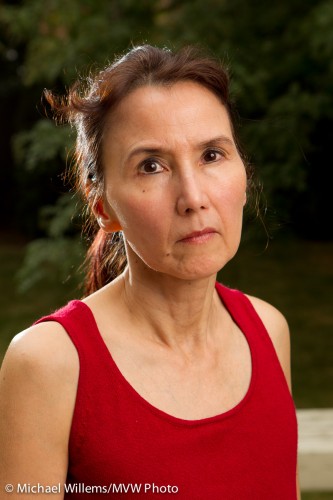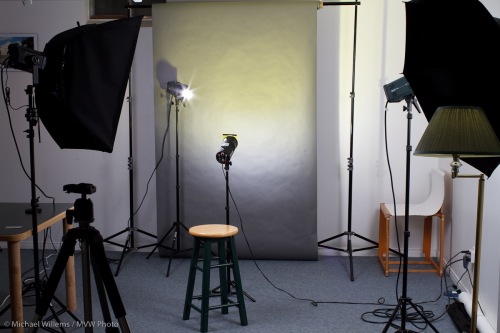I shot a few shots of Kelly, the hair stylist for a shoot the other night.
Here she is:
Nice. So how did I light that?
Here’s how.
I used my 1D Mk4 camera in manual mode, equipped with a Pocketwizard to drive the following flashes:
- A 400 Ws Bowens light with a Bowens softbox. Powered by a battery (the Travel Kit); driven by a Pocketwizard.
- A 430EX flash with a Honl Photo 1/4″ grid and a Honl Photo gel (green in the pullback shot above; egg yolk yellow in the real shot) to light up the background. This was also fired by a Pocketwizard, connected via a Flashzebra cable.
The other flash was a spare and I did not use it. I set y exposure for a dark background, then metered the flashes with a light meter. I used the speedlight to light up the background to provide hair separation, since I could not get it in the back aiming forward to light the hair, which I would otherwise have done.
A fairly simple setup for a nice shot, no?

